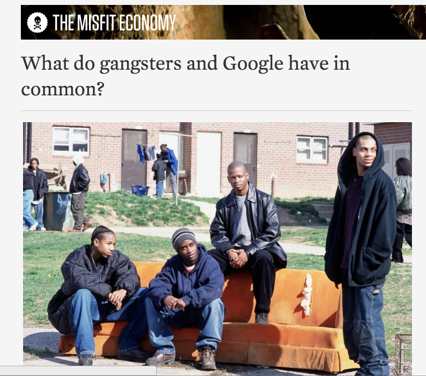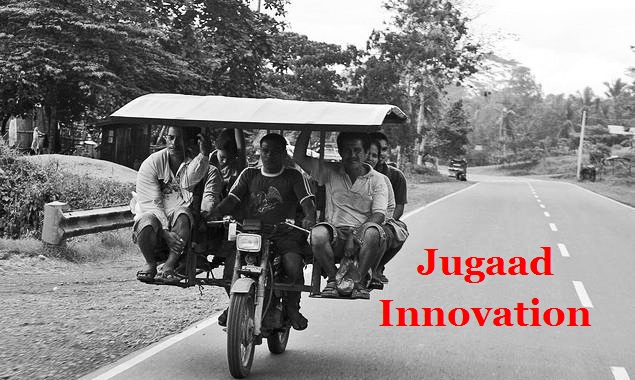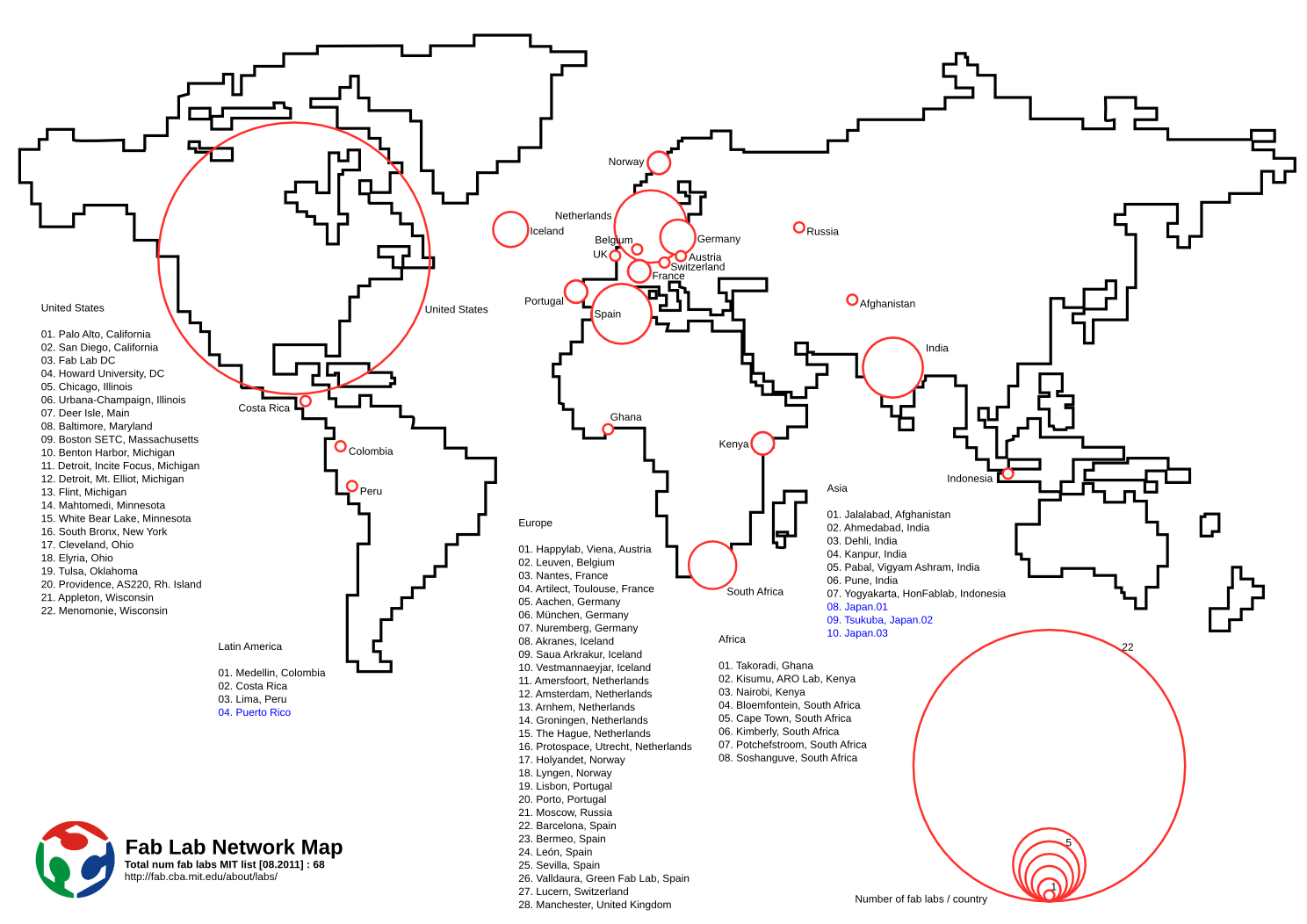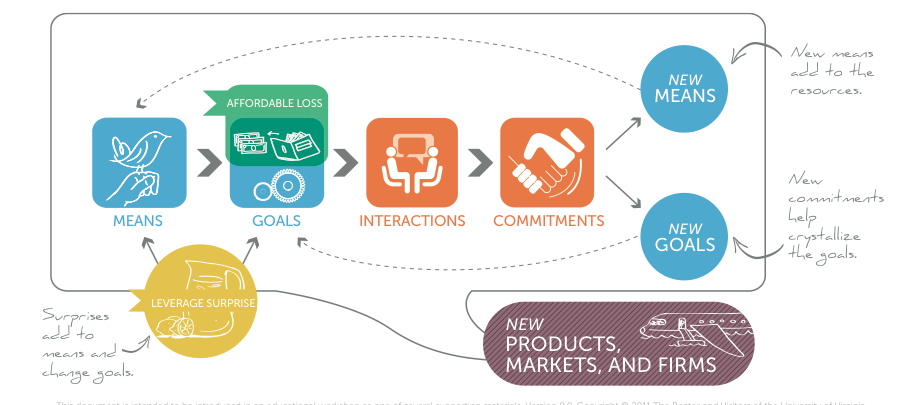A project by The A Factor, Global CAD, and VOCES.
Two weeks.
That’s all we had. Two weeks to prepare and shoot a 30 minute documentary in Nairobi on social innovation–to show how the city is bustling with new ideas, projects and entrepreneurs. Two weeks to get the technical team on board, to get to know each other, to find the right angle and narrative to best convey our message. Easy, we thought…We can do it! 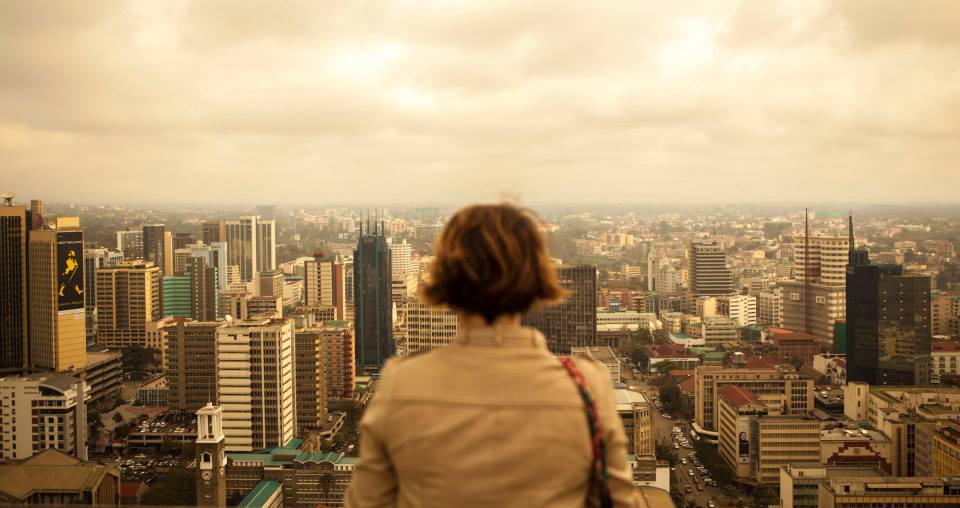
Monday, 12th of August. This is our first breakfast. For the first time, I meet Ana and Juan from VOCES and Pepe and Nadia from Uranes Films. Objective of the day: to understand the local context, but above all, the why of the Innovation Tours and of The A Factor. How can my story and my quest relate to the audience? Why do I want to give visibility to local entrepreneurs? The complicity is born. Even if our paths differ, between UNICEF, TV and music production, we all share the will to have a positive impact, to bring a different image of Africa in general and cooperation in particular, and a tipping point in life where we all wonder what will be our next steps. This initial bond connects immediately and will facilitate the hectic days to come. At night, we watch Nairobi Half Life as a first introduction to the city.
Tuesday, 13th. We have our initial meetings at iHUB, Growth Africa, and 88mph. The team discovers for the East Africa with fresh eyes, and visiting the key city’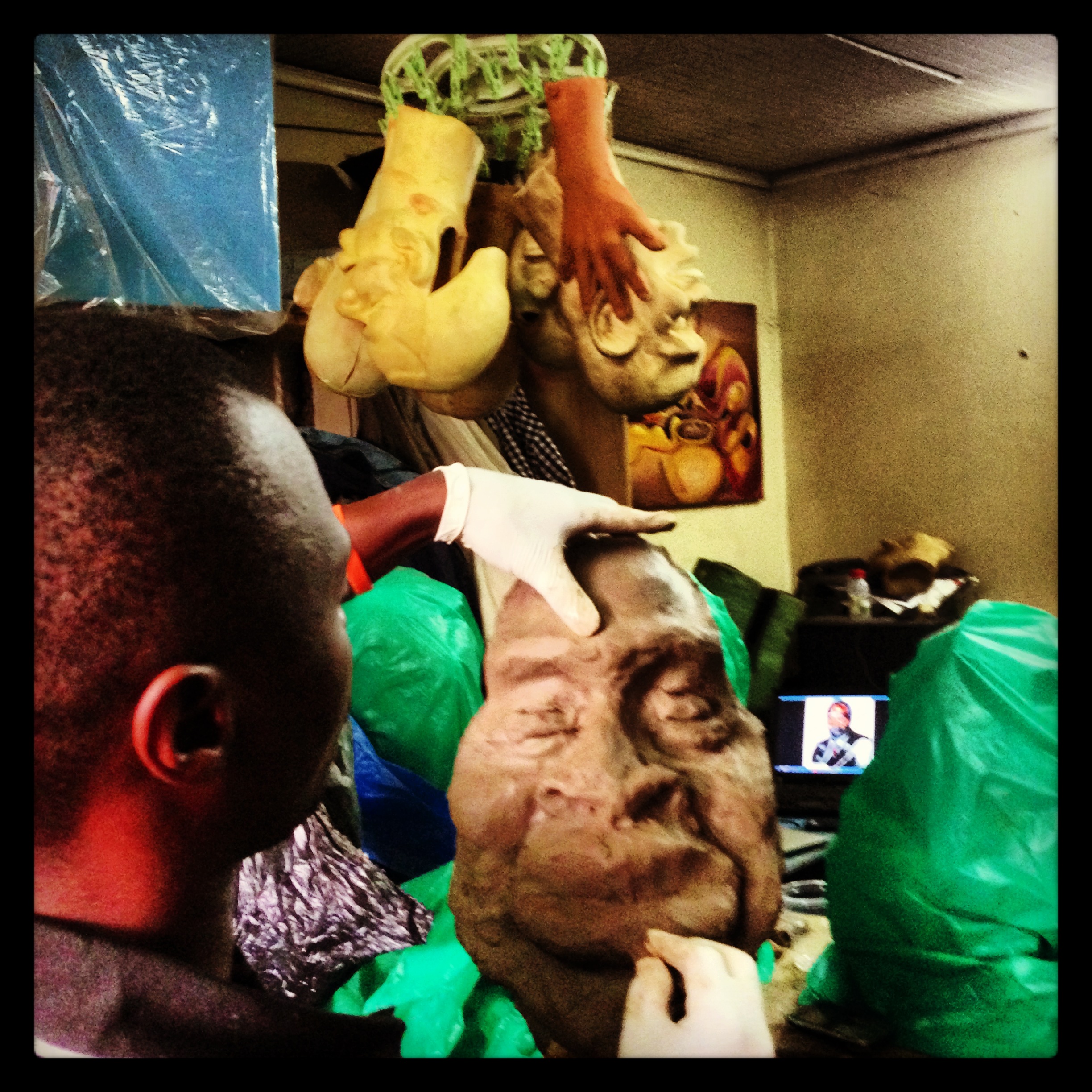 s incubators helps us to feel the pulse of this vibrant city. Yet, it is very easy to feel overwhelmed by the multiplicity of projects and the ticking clock of the deadline: In a few hours, Innovate Kenya tells us how they directly source new projects in schools through a global ideas competition sponsored by Google. Roger tells us about the political puppet TV show called XYZ, viewed by 10 million people every month and about their platform Boni TV, a local kind of Netflix with videos from all over Africa. We visit the iLab, the tech incubator set up by Safaricom in the private Strathmore Business School, as a future Wayra of Telefonica.
s incubators helps us to feel the pulse of this vibrant city. Yet, it is very easy to feel overwhelmed by the multiplicity of projects and the ticking clock of the deadline: In a few hours, Innovate Kenya tells us how they directly source new projects in schools through a global ideas competition sponsored by Google. Roger tells us about the political puppet TV show called XYZ, viewed by 10 million people every month and about their platform Boni TV, a local kind of Netflix with videos from all over Africa. We visit the iLab, the tech incubator set up by Safaricom in the private Strathmore Business School, as a future Wayra of Telefonica.
Wednesday, 14th. The team splits. Anna and Pepe feel the need to stay at home to work on the narrative. We are not talking about a classic journalistic report with enchained interviews. They want to raise the bar higher. A proper documentary, with a story line, a fictional approach and a logical thread the audience can relate to. What are the visual images we have in mind? We share ideas of videos from Amelie to Leolo, to videos from our colleagues of What Took You So Long. Pepe and Nadia show us the video or their last videoclip. We are captivated by their vision.
Thursday, 15th. Juan, Anna, and I are still visiting local projects, interviewing potential “characters” and assessing the right initiatives to display. So many criteria to take into account: how to create a representative image in so little time; how to ensure a balance between male and female interviewees, Kenyan and expatriate; how to guarantee a mix of sectors, from the technological to youth empowerment through sports, from activism to agriculture or crafts? The choices 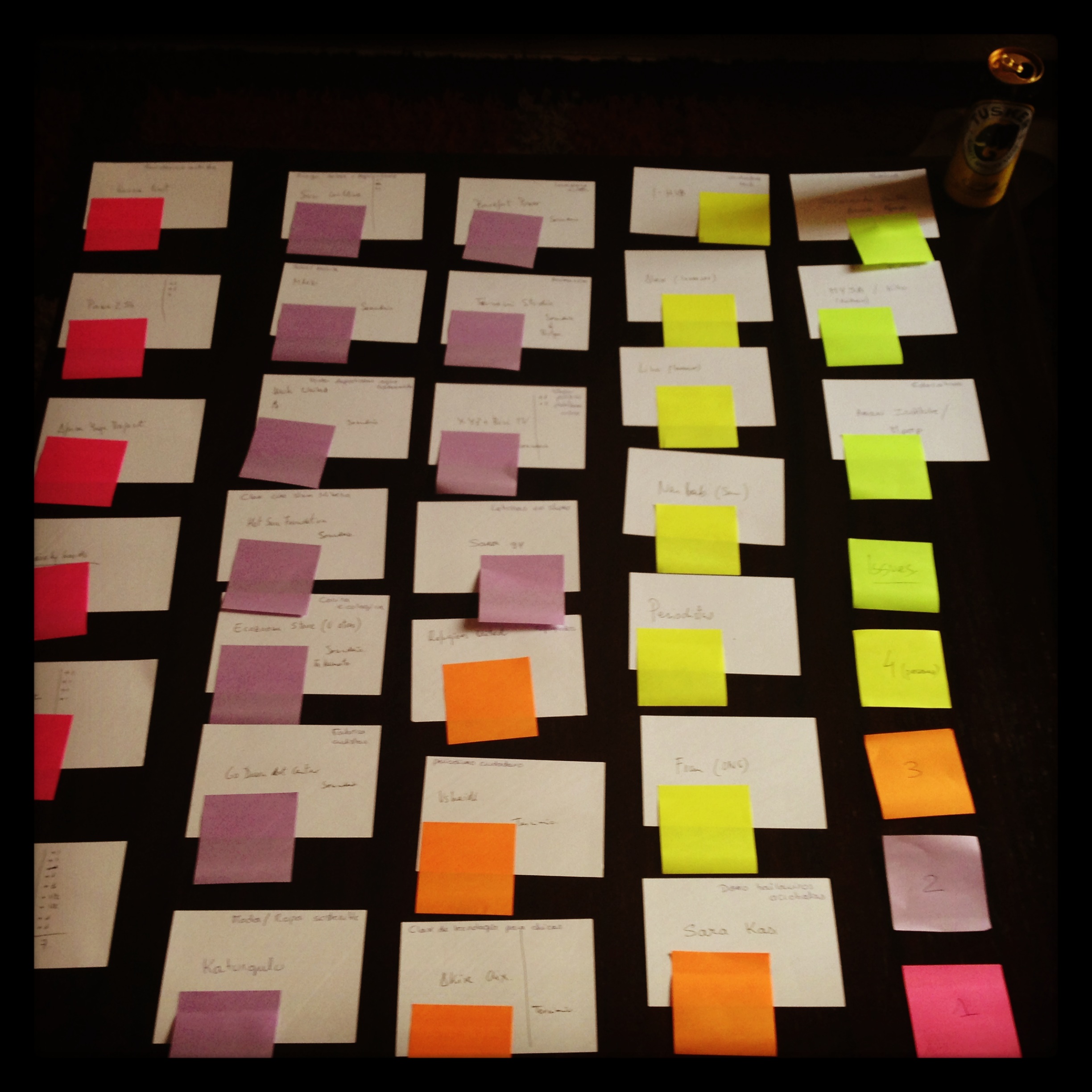 are tough. With Juan, we identify around 10 key criteria to make our decisions more objective and structured. It sounds like Eurovision. The table is soon filled with post-its of the different projects. Pepe and Nadia are strict: no more than 4 main projects will get 4 minutes of time, and only 2 secondary projects will be featured. It takes me ages to eliminate any option. This is because I am a Libra and I want it all. I manage to convince them that we could feature a saturation peak in the documentary with an enumeration of the projects that haven’t been featured so far. They accept. I relax.
are tough. With Juan, we identify around 10 key criteria to make our decisions more objective and structured. It sounds like Eurovision. The table is soon filled with post-its of the different projects. Pepe and Nadia are strict: no more than 4 main projects will get 4 minutes of time, and only 2 secondary projects will be featured. It takes me ages to eliminate any option. This is because I am a Libra and I want it all. I manage to convince them that we could feature a saturation peak in the documentary with an enumeration of the projects that haven’t been featured so far. They accept. I relax.
The first pre-selection is done.
Friday, 16th. We finish the week visiting different projects related to arts promotion: Kuona Trust and its promotion of local artists for the last 18 yea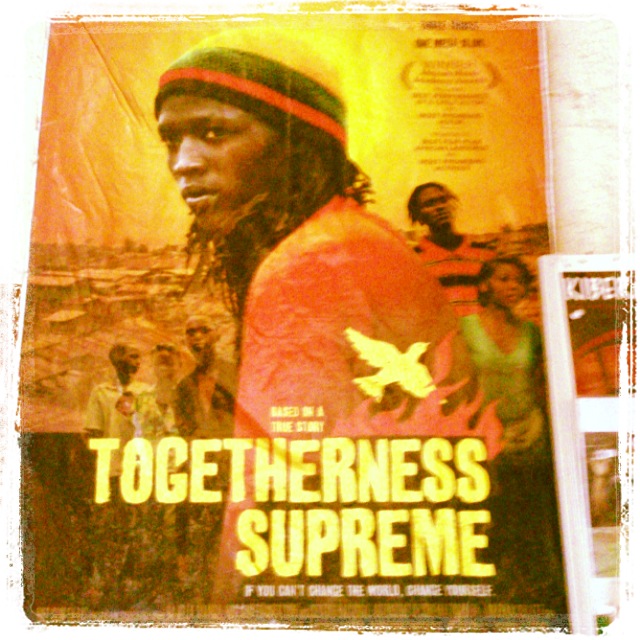 rs; Go Down Arts Center and its cluster of TV and dance related start-ups; Pawa254 as coworking of journalists, graffiti artists and activists; and Tsunami Studio, the African Pixar. We visit the Hot Sun Film School, which trains the youth of Kibera in filmmaking for no charge. They also produce films and videos to question the image of the life in the slums, they have their own TV Channel Kibera TV, and they are actively participating in the Slum Film Festival displaying videos for and from the slums. In Sarakasi Trust, dancers and acrobats prepare their next show. The team of the NEST (because art is life) tells us about the vibrant fashion scene as Kapoeta and the coming fashion show by Katungulu Mwendwa. Every new meeting shakes our selection. New contacts appear, the web widens. There is so much to show, so much to say and so little time.
rs; Go Down Arts Center and its cluster of TV and dance related start-ups; Pawa254 as coworking of journalists, graffiti artists and activists; and Tsunami Studio, the African Pixar. We visit the Hot Sun Film School, which trains the youth of Kibera in filmmaking for no charge. They also produce films and videos to question the image of the life in the slums, they have their own TV Channel Kibera TV, and they are actively participating in the Slum Film Festival displaying videos for and from the slums. In Sarakasi Trust, dancers and acrobats prepare their next show. The team of the NEST (because art is life) tells us about the vibrant fashion scene as Kapoeta and the coming fashion show by Katungulu Mwendwa. Every new meeting shakes our selection. New contacts appear, the web widens. There is so much to show, so much to say and so little time.
It’s Friday night. We all agree on a final selection. Pepe reads us the storyline. We approve. Like every other day, the meeting ends late at night in the house we all rented for the occasion. It is now time to slice the story into shots, gather them into the different locations and, according to the duration of the scenes, schedule the shooting plan. Production starts. We are crazily calling people, matching agendas, finding extra cameraman or sound professionals, renting a slider or an extra tripod that actually works. The phone doesn’t stop ringing. And we are glad to have Wi-Fi at home…
Saturday, 17th. Shooting starts. To merge work and fun, we take part in the community class by the Africa Yoga Project 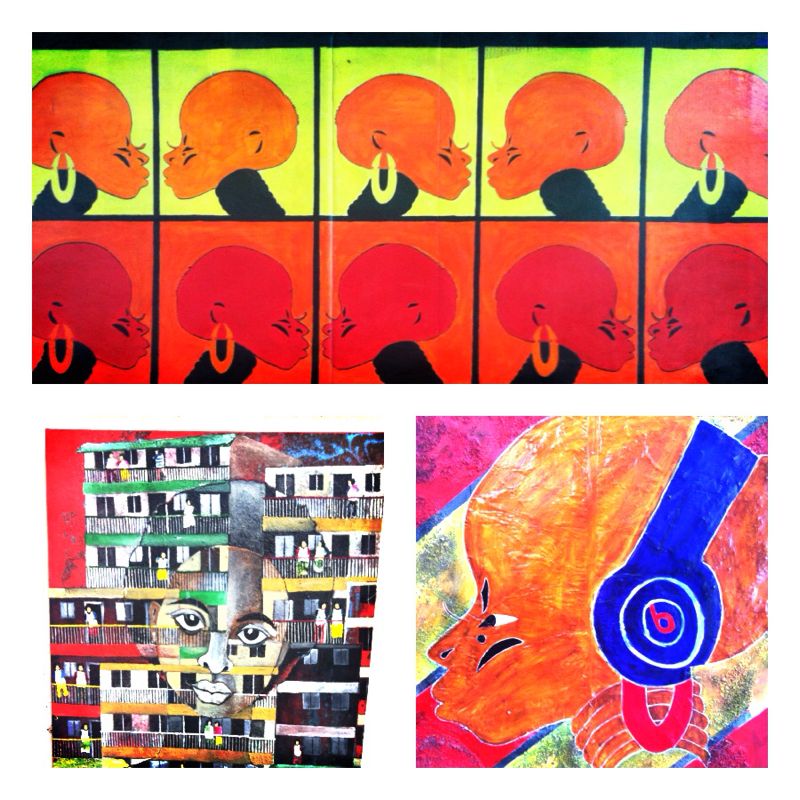 that we want to feature in the documentary. After 2 hours of effort, we interview Billy on how he manages to train youth from the slums to be yoga teachers and make a sustainable living out of it. He tells us how this project especially changes the perceptions of students in their communities—it changes how the youth’s families and friends see them, and also how the youth see themselves. It fosters mutual respect in the community.
that we want to feature in the documentary. After 2 hours of effort, we interview Billy on how he manages to train youth from the slums to be yoga teachers and make a sustainable living out of it. He tells us how this project especially changes the perceptions of students in their communities—it changes how the youth’s families and friends see them, and also how the youth see themselves. It fosters mutual respect in the community.
In the afternoon, we shoot at Kuona Trust. There’s an event taking place that is sponsored by Absolut Vodka, and it’s where the local hipster community gathers. This is our opportunity to discover Cyrus’ art pieces, acclaimed by TED and international media.
Sunday, 18th. The wake up rings early today! We need to interview Maria Springer, the founder of Livelyhoods before she leaves for Ghana. We reach the slum of Kangemi when everybody is heading to mass and loudspeakers all over are praising God with high-pitched voices. Kids gather around our cameras and Pepe is having a hard time filming without drawing too much attention. Slums inhabitants are tired of poverty tourism and expats taking dramatic pictures of their misery. Yet, people are quite helpful when we explain we want to showcase this project which is actually employing local youth to sell goods as cooking stoves or solar lamps to the community.
Monday, 19th. The sky is grey and the air chilly. Yet Alfred, our amazing driver (and at times bodyguard), brings us to the most representative places of the city: the meat market, the university, the train station, the memorial of the bombing of the US embassy, etc… We even 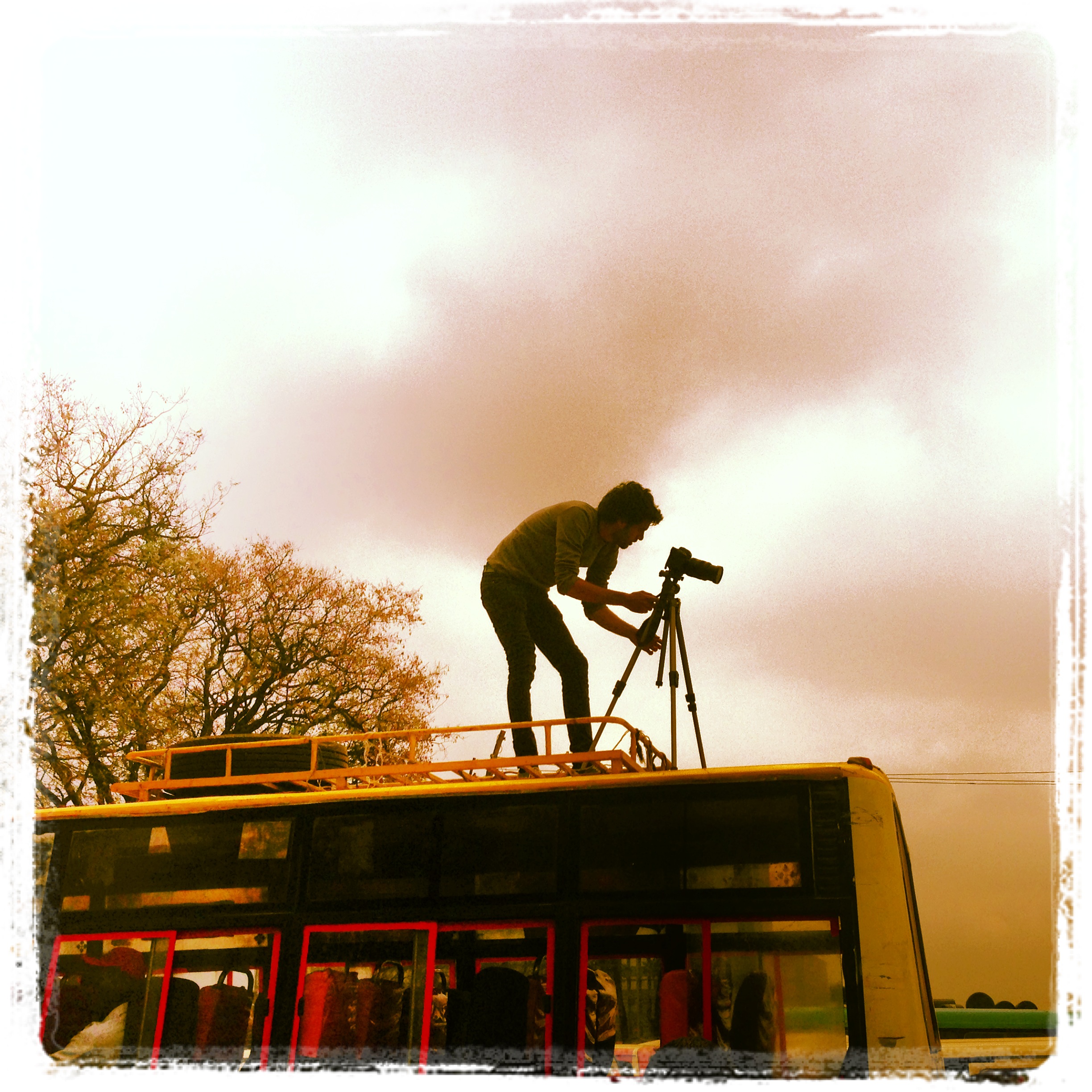 try to get an official license for access through thousands of corridors and offices at the city council but it’s above our capacity…The view from the top of the KICC building is impressive. Pepe climbs on the top of buses to shoot the chaos of the Matatu Station. We are covered with dust when we arrive at 88mph to interview Kyai, the founder of Mchanga, a mobile platform allowing users to raise funds for personal causes (wedding, funeral, education, etc.) through their mobile phones.
try to get an official license for access through thousands of corridors and offices at the city council but it’s above our capacity…The view from the top of the KICC building is impressive. Pepe climbs on the top of buses to shoot the chaos of the Matatu Station. We are covered with dust when we arrive at 88mph to interview Kyai, the founder of Mchanga, a mobile platform allowing users to raise funds for personal causes (wedding, funeral, education, etc.) through their mobile phones.
Tuesday, 20th. As always, we wake up at 6:30am to shoot some scenes and timelabs at home. I have to change 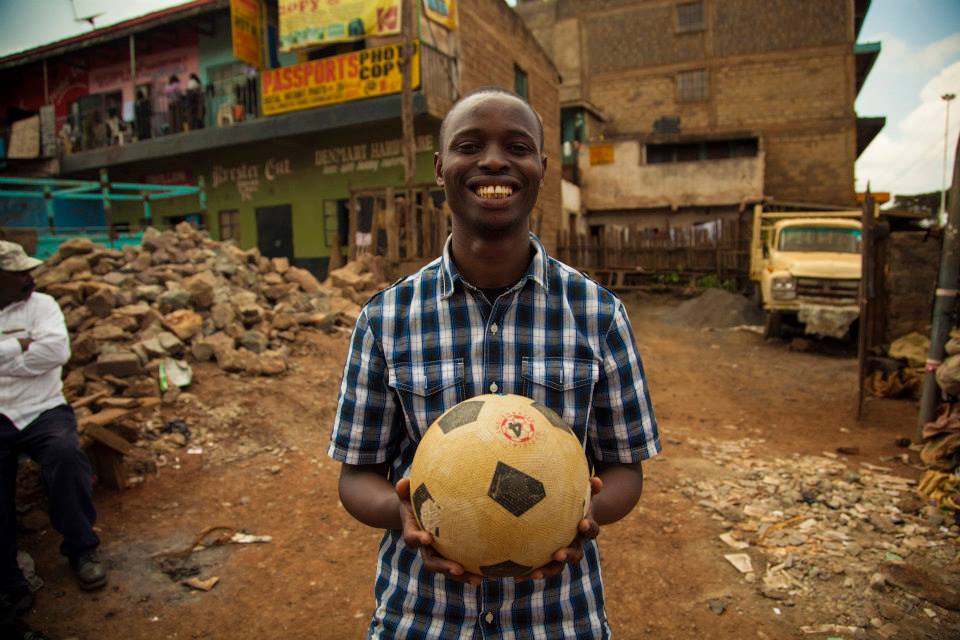 between the different clothes I wore during the week to ensure everything will be coherent during editing.
between the different clothes I wore during the week to ensure everything will be coherent during editing.
9:30: Alfred comes to pick us up and we join Kawangware, one of the slums where Livelihoods operate, in order to shoot one their young salesmen “in action”. Kate, his neighbor, is cooking ugali, the local traditional flour paste, on the cooking stove we brought from Ecozoom. She loves it! So we decide to leave it for her as a gift. Kids are playing football outside and Kate loves to be the actress for a few minutes.
On our way back, we interview Catherine, one of the founders of ShopSoko, an online platform connecting local artisans crafting jewels for American, and soon European, buyers.
Wednesday, 21st. We have a long day ahead of us. We first head to Githurai, 30 km north of town to meet Katherine, one of the artisans of ShopSoko, at her home and workshop. Five or six women are sitting next to a cow, cutting papers, rolling them into beads, painting them, and creating colorful earrings or belts. We then come back to the city to pick up the two founders of SunCulture, Charles and Samir, and then head towards Limuru and the field where a farmer has installed their sun-powered irrigation system. We find a very clean and organized field where Peter has multiplied his income by 10 in just one year by using the new irrigation system and switching from corn to tomatoes and onions, which are more profitable crops. On our way back, we get stuck in the famous Nairobi traffic jams for hours…What a long day!
Thursday, 22nd. Today we work on our last main project: Pawa254. We first interview Njeri on the objective of this coworking 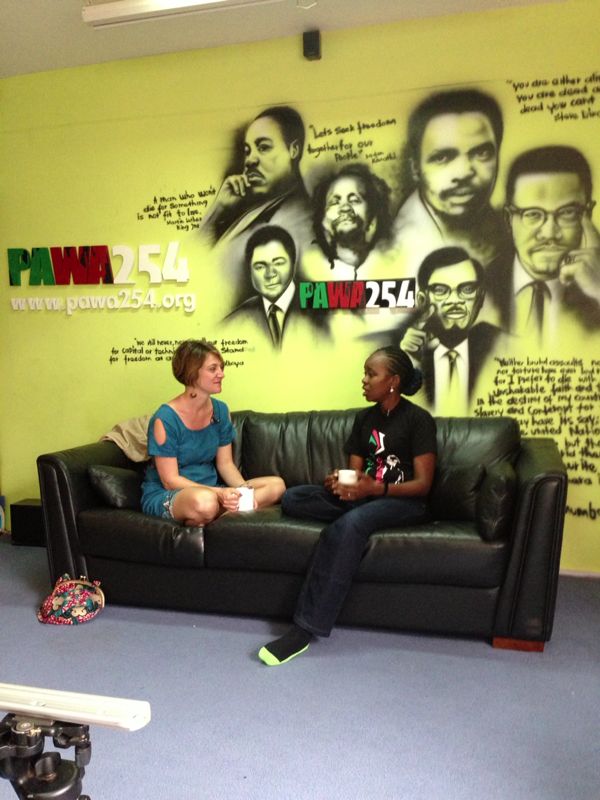 space: rehabilitating artists and empowering youth. We then climb onto the rooftop where a large painting of Nelson Mandela overlooks the skyline of the Central Business District. Two artists paint some new graffiti for us. We meet again with Chief Nyamweya from Tsunami Studio to discuss how we could work with them during the post-production process. In the afternoon, we head to 88mph to interview Jonathan Kalan, the local correspondent of BBC, specialist of technology and innovation. Then we head to iHub to interview Jessica Colaco and Jimmy about the launch of their technological coworking. We are so exhausted people can read it on our foreheads. And yet, we finish on the terrace of the iHUB and wait for the sunset for a last Timelab…
space: rehabilitating artists and empowering youth. We then climb onto the rooftop where a large painting of Nelson Mandela overlooks the skyline of the Central Business District. Two artists paint some new graffiti for us. We meet again with Chief Nyamweya from Tsunami Studio to discuss how we could work with them during the post-production process. In the afternoon, we head to 88mph to interview Jonathan Kalan, the local correspondent of BBC, specialist of technology and innovation. Then we head to iHub to interview Jessica Colaco and Jimmy about the launch of their technological coworking. We are so exhausted people can read it on our foreheads. And yet, we finish on the terrace of the iHUB and wait for the sunset for a last Timelab…
Friday, 23th. The alarm rings. We don’t want to hear it. We feel dizzy. We make a quick trip to Sarakasi Trust to film some of the acrobats. Most of them are in Mombasa for a show but we manage to get a special exhibition, just for us.
Then we head back home to shoot the final interviews. Nanjira, Federico, and Lino pass by to tell us their vision on the local ecosystem, its challenges and opportunities. We then shoot some final scenes—one of the scales representing the Libra and, of course, some last taxi drives.
15:30. That’s over…
We feel excited and sad at the same time. The first part is over. Yet we still have a lot to do in editing and postproduction.
Let’s imagine where we will do the screening here later this year!
But now it’s time to relax and enjoy Kenya as a tourist for the first time.
By: Aurelie Salvaire


